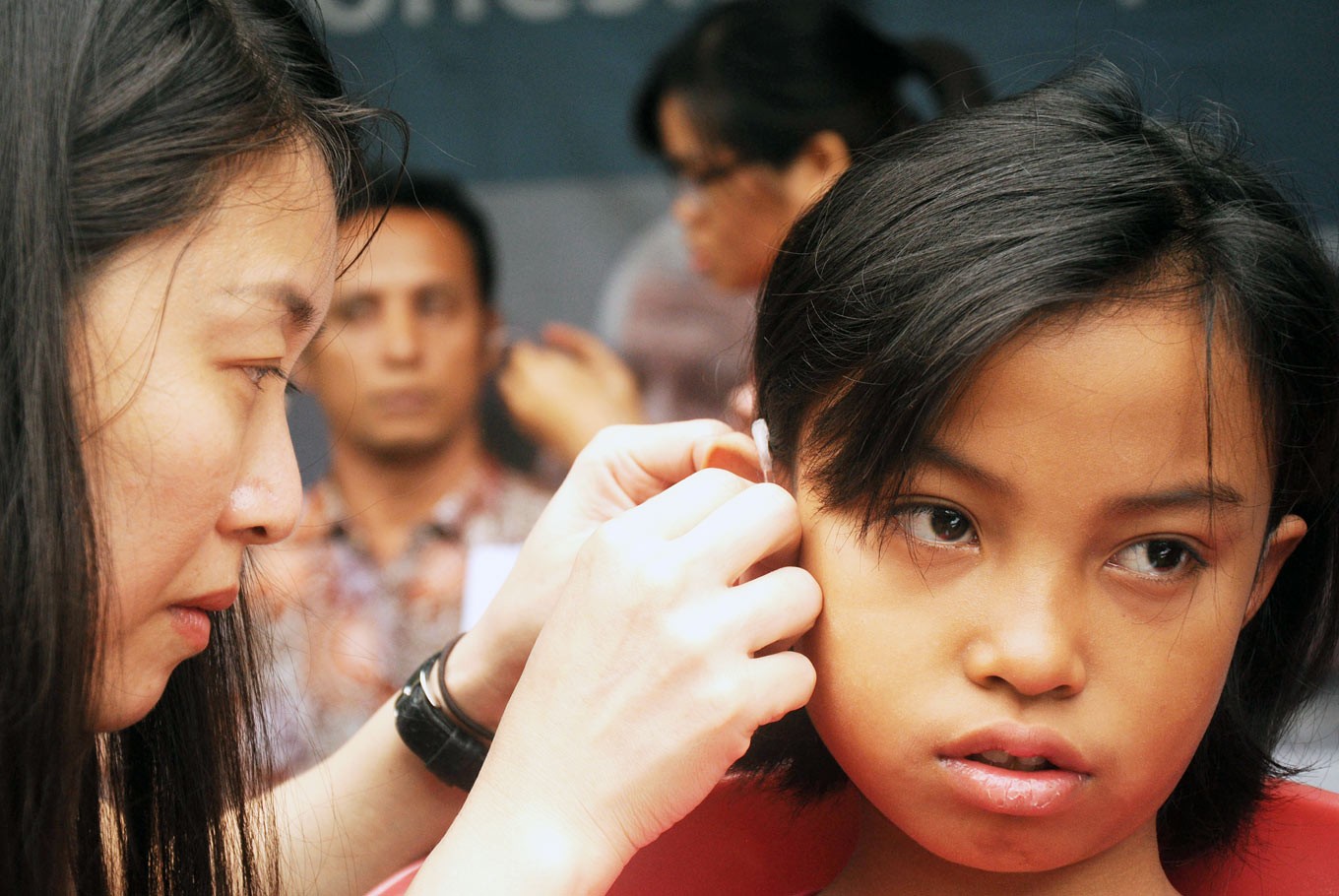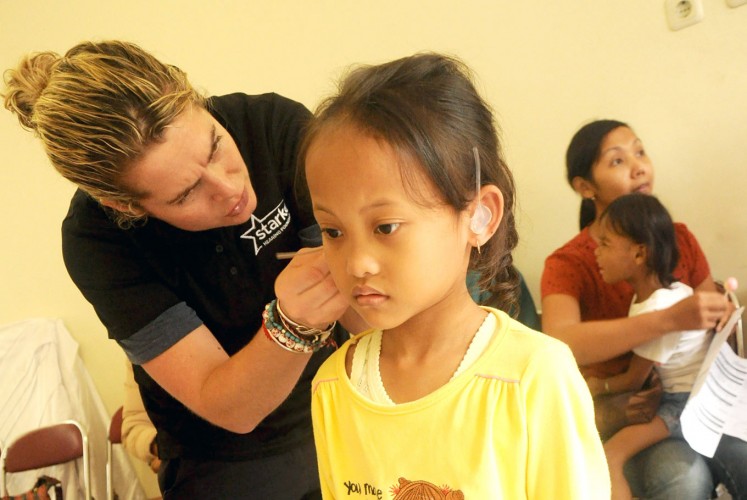Popular Reads
Top Results
Can't find what you're looking for?
View all search resultsPopular Reads
Top Results
Can't find what you're looking for?
View all search resultsBetween hearing aids and sign language
For those in the deaf community, a hearing aid presents them with two new challenges; talking and recognizing sounds.
Change text size
Gift Premium Articles
to Anyone
A hearing aid is not an affordable tool for many people in the deaf community.
The device, costing between Rp 6 million (US$443) and Rp 7 million, can help those who have difficulty hearing make fast adjustments to incoming sounds.
That is why residents with hearing impairments in Malang, East Java, got excited when they heard about a program offering free hearing aids.
The deaf community flocked to a house on Jl. Ijen in the city and patiently queued up for a free device, provided by the Social Affairs Ministry, the Starkey Foundation and the Indonesian Women’s Care Community.
Manfred Stoifl from the Starkey Foundation, a United States-based organization dedicated to building better lives for hearing-impaired people, said the program aimed to change the way people lived.
“Millions of Indonesians get no proper education or employment because of hearing disabilities so it’s time to work together to lend a hand,” he said.
“But the effect produced varies depending on the severity and length of the disorder,” the Austrian said.
He said people with normal hearing could talk because the voice heard by normal ears is delivered by the brain to the mouth for imitation. Meanwhile, those with hearing impairment can’t talk clearly or are even completely unable to talk as there’s no voice to be imitated.
The Starkey Foundation has cooperated with social affairs agencies in several cities across Indonesia since 2015 to help monitor and guide the recipients in using the devices to recognize various sounds.
Two ways of conversation: Members of the Akar Tuli community communicate by using sign language. (JP/Nedi Putra AW)Meanwhile, those who have become accustomed to living in the silent world have things to say about it all.
Hufani Septaviasari Irnanto, a spokesman for Akar Tuli, a community of the deaf in Malang, welcomed the program with some suggestions.
“The hearing aids should also be given to hearing-impaired children at the age of three, or at least to those aged under five years,” the student of administration at Brawijaya University, Malang, said in sign language.
Hufani, who like her Akar Tuli peers prefers to be called tuli (deaf) rather than tuna rungu (without hearing), said the hearing aids would be effective only with guidance.
She related her experience receiving instruction from her parents on how to use the device at the age of three.
“Even as an adult, I grow like a baby as there are lots of peculiar sounds everywhere,” she said.
Hearing aids aren’t readily accepted by all those with hearing disabilities, though.
Apart from the high price, many aren’t accustomed to such gadgets.
Having become used to silence since they were born, some are shocked when they apply the aids. Others find the aids incapable of functioning optimally because of the severity of their hearing impairment.
“I was once guided by my parents in order to recognize sounds, but I would often have difficulties when they were out of town,” said Maulana Aditya, 23, another Brawijaya University student, as translated by Luciana Eka Prihatiningsih, an interpreter from Akar Tuli.
Incoming sounds: A girl stands still as a volunteer attaches the hearing aid. (JP/Nedi Putra AW)In the same tone, Muhammad Hasanuddin, 23, said he felt grateful for the new technology, but he frequently got dizzy when using the device. The student of tourism at the university thus chooses to use sign language instead.
Hufani, who aspires to be a teacher or a civil servants, also suggested that hearing aid donations be allocated based on more accurate data so as to reach the right targets.
Sharing the view of Manfred Stoifl, she said there ought to be special training programs to identify sounds and voices.
The government and local administrations could offer a friendly gesture to the deaf community by providing them with public facilities.
Hufani said the deaf community in Indonesia did not enjoy easy access to public services, such as when taking the bus or train, with most announcements being made by audio means only.
Current technology has enabled other impaired groups like blind people to communicate via text messages or smartphone apps, while the deaf remain unable to watch TV or films properly unless there are subtitles or sign language interpreters.
The deaf still confront discrimination in schools and public places, where regular people are reluctant to interact with their fellow hearing-impaired citizens because most people have not mastered sign language.
“Besides being a forum for communication and encouraging the potential of the deaf, Akar Tuli also wants to popularize sign language in society,” Hufani said.













